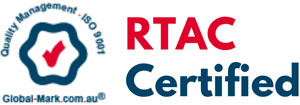We invested in modern infrastructure that houses four IVF labs and two operating theatres. Our staff don protective clothing such as hoods, face masks and gloves while on duty and enters the laboratory through airlocks to maintain minimal air contamination.
Equipment inside the cleanroom is strictly regulated, restricted to cleanroom furniture with low Volatile Organic Compound (VOC) emission and permitted building and cleaning materials.
‘Clean room’ air quality
One of our major assets is our “clean room” air quality which provides the optimal environment for the growth of eggs and embryos, which cannot tolerate the slightest stress. Our laboratory is free of common toxins that pervade most small setups and is designed according to Cleanroom ISO 7 (Class 10,000) standards, which control contamination by monitoring airborne and surface particles, liquid levels, and static electricity.
Ground-breaking Technology
We use some of the most advanced fertility treatments and technologies available in the world today.
- Egg, sperm & Embryo Freezing by Vitrification
Egg, sperm, and embryos can be frozen and thawed without compromising quality using vitrification. Vitrification is a type of rapid freezing that yields similar results to fresh IVF cycles. This means, if your IVF treatment produces several embryos, they can be frozen, stored and used for when you’re ready to try for another baby. Frozen egg, sperm, and embryos are shown to yield similar results to fresh transfers.
- Time-lapse Embryo imaging & Blastocyst culture
During IVF, the egg and sperm are fertilised in a lab, and the resulting embryos are held in an incubator until they are transferred into the mother’s womb to develop as a normal pregnancy.
We use an incubator with an inbuilt camera called EmbryoScope®. The EmbryoScope® provides thousands of pictures of the growing embryos, known as time-lapse embryo imaging. Time-lapse embryo imaging allows us to study embryo development and select the embryos with the characteristics that most likely will result in a healthy pregnancy. Also, with undisturbed culture, more embryos will be able to reach the blastocyst stage (an embryo that reaches the highest level of maturity). More
Sunfert International is one of the first fertility centre in Malaysia to adopt the EmbryoScope® as a standard of care.
- Single incubator slot per patient
To maintain the highest standards, we’ve made it our policy to use a single incubator slot for every patient. We use top-end culture media along with time-lapse embryo imaging to select the embryos with the greatest implantation potential and to minimise the number of embryos to transfer.
- Karyomapping
Karyomapping is a new technique that allows couples, known to be carriers or affected with an inherited condition to avoid passing on that disorder to their offspring. Unlike existing PGD tests which had to be tailor-made for each individual couple, karyomapping provides a test for PGD of almost any known gene defect with a rapid turnaround time.
As karyomapping examines the chromosomes at approximately 300,000 different points and finds a DNA fingerprint unique to the chromosome that carries the defective gene, it is likely to be more accurate than current tests. More
- Intracytoplasmic Sperm Injection (ICSI)
Mentioned briefly on our IVF page, ICSI is often a necessary part of IVF treatment, particularly if you have a history of IVF failure, or the male partner has low sperm count or abnormalities. ICSI is the process of injecting a single, active sperm microscopically into an egg using a special instrument called micromanipulators. ICSI is included with our IVF packages. Read more about ICSI here.
- Intracytoplasmic Morphologically Selected Sperm Injection (IMSI)
In cases of recurrent miscarriages, treatment cycles that have not achieved good quality embryos, or where male partners have been diagnosed with sperm abnormality, IMSI is an advanced sperm selection technique that offers more precision. With IMSI, sperm samples are examined under a microscope which is almost 6000 – 7000x more powerful. It enables us to choose the best quality sperm to inject into the egg. Once the best sperm has been selected, the IMSI procedure is carried out in the same way as ICSI. More
- Laser Assisted Hatching
Once an embryo is transferred to the womb, it needs to hatch out of its protective shell or layer of proteins (called zona pellucida) to attach to the womb lining for implantation to take place. Laser assisted hatching uses a laser beam to thin the protein shell and is necessary when there’s a thickened zona pellucida or when there’s diminished ovarian reserves, previous failed IVF attempts, or advanced maternal age.

